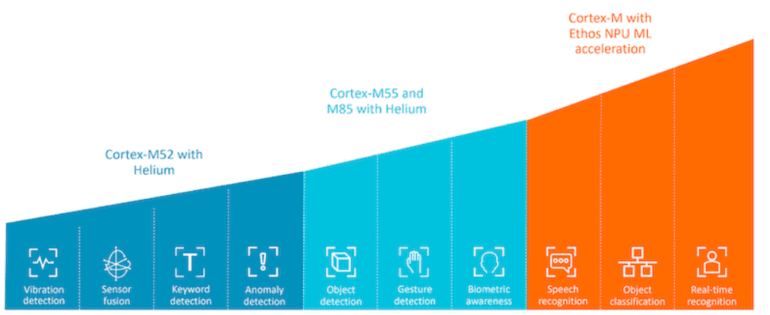TL;DR:
- Arm unveils Cortex-M52 processor, designed for low-power embedded AI.
- Cortex-M52 balances performance, cost, and efficiency for a wide range of applications.
- It offers significant ML and DSP performance boosts compared to previous Cortex generations.
- The processor includes Arm’s advanced technologies and a unified software suite.
- Cortex-M52 has the potential to revolutionize AI integration in IoT, industrial control, and more.
Main AI News:
Arm, a leading innovator in the world of semiconductor technology, has introduced its latest breakthrough: the Arm Cortex-M52 processor. This cutting-edge Cortex CPU core is poised to revolutionize the landscape of embedded artificial intelligence (AI) by delivering unparalleled efficiency and cost-effectiveness. With built-in support for digital signal processing (DSP) and machine learning (ML) acceleration, the Cortex-M52 enriches the Arm Cortex-M lineup, offering a compelling solution for designers seeking to harness the power of AI without breaking the bank.
As the demand for AI integration continues to surge across various applications, designers face a persistent challenge—how to strike the right balance between device size, power consumption, cost, and performance. The Cortex-M52 is a strategic response to this conundrum, squarely targeting applications where cost-efficiency and optimal performance are paramount considerations.
In this exclusive interview, we sit down with Paul Williamson, Senior Vice President and General Manager of the IoT Line of Business at Arm, to gain insights into the inspiration behind the Cortex-M52 and its potential impact on a multitude of applications.
Expanding AI’s Reach
While grandiose AI models like GPT-4 often dominate the headlines, the influence of AI and ML models extends far beyond the realm of computational giants. Paul Williamson emphasizes, “Many people just don’t realize how extensively AI has infiltrated embedded devices, leaving its mark on applications across our homes, cities, and industries.“
Yet, these AI models demand substantial computational resources and signal processing capabilities, often necessitating additional silicon-like NPUs. In scenarios prioritizing cost or compactness, the utilization of hefty AI processors becomes impractical.
This is precisely the challenge that Arm seeks to address with its Cortex-M52 processor. Striking a delicate equilibrium between AI/ML performance and size, cost, and real estate constraints, the Cortex-M52 empowers designers to explore a plethora of new applications previously deemed unattainable with existing processor technology.
Elevating Performance
The Cortex-M52 introduces several pivotal features that set it apart from its predecessors and contemporaries within the Cortex-M family. Notably, its compact footprint, low power consumption, and cost-effectiveness make it an ideal candidate for high-efficiency applications with less demanding computational requirements.
In comparison to earlier Cortex generations, the Cortex-M52 boasts a remarkable 5.6× performance boost in ML tasks and a substantial 2.7× increase in DSP capabilities. Designers now have access to significant performance enhancements when crafting ML-enabled applications. Additionally, the Cortex-M52 incorporates Arm’s Helium, PACBTI, and TrustZone technologies, mirroring the high-end Cortex-M85.
Complementing the hardware prowess, a comprehensive software suite accompanies the Cortex-M52, enabling designers to streamline their development workflow. This unified toolchain caters to embedded code, DSP, and AI/ML programming, reducing development time and expediting time-to-market.
The amalgamation of improved ML performance and a 23% reduction in die area significantly amplifies designers’ capacity to infuse AI into a diverse array of devices. Williamson underscores some secondary benefits of the Cortex-M52, stating, “We believe Cortex-M52 will play a pivotal role in eliminating barriers to ML adoption, making AI accessible to all, and fostering innovation at scale, all while harnessing Arm’s robust software ecosystem.”
Conclusion:
Arm’s Cortex-M52 processor is a game-changer in the world of low-power embedded AI. Its balanced approach to performance, cost, and efficiency, coupled with significant performance enhancements, positions it as a catalyst for innovation across various industries. As AI becomes more accessible to smaller devices, the market can expect a surge in IoT deployments and a broader adoption of AI-enabled applications, ushering in a new era of intelligent devices and systems.

